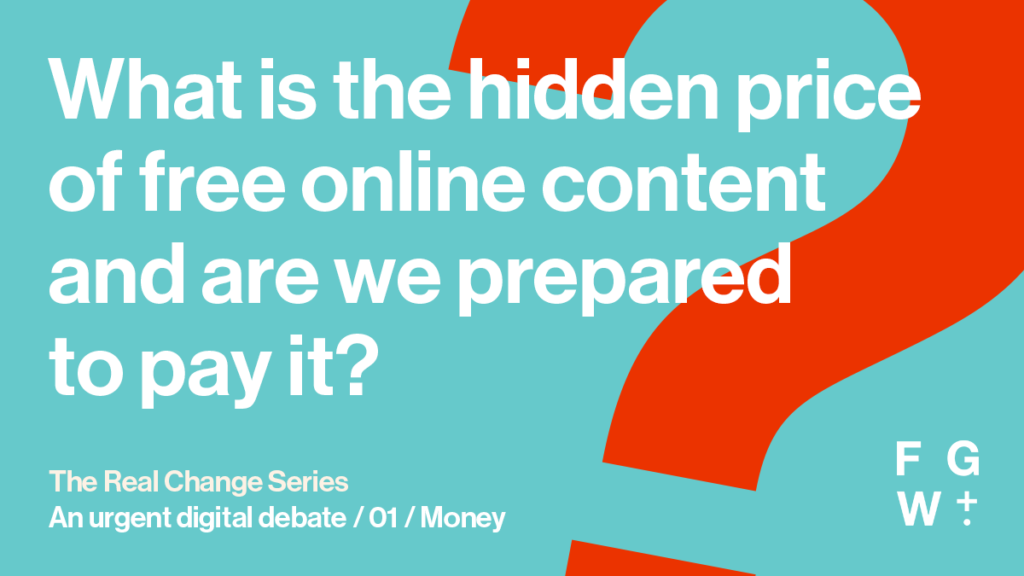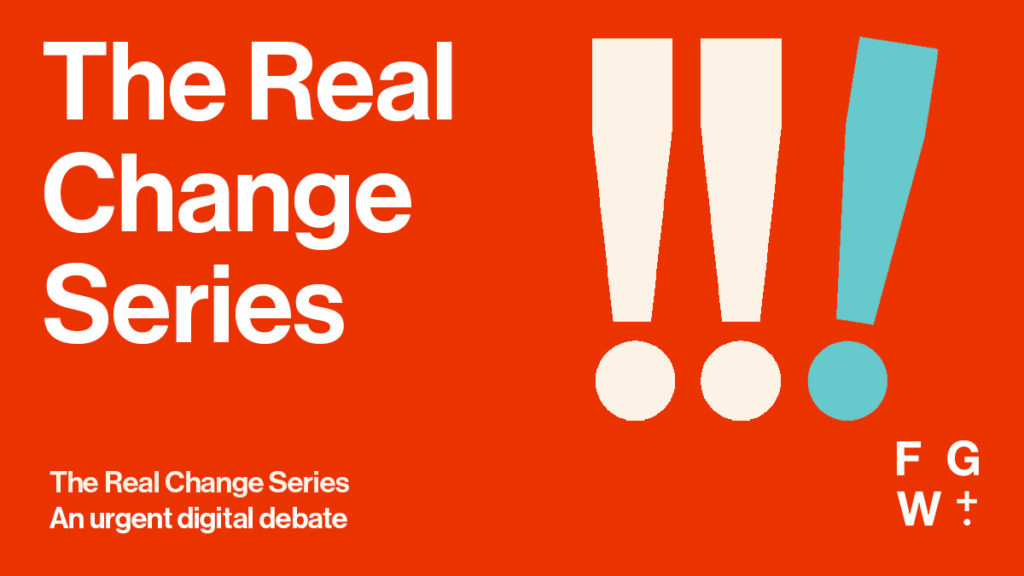In our previous article, we introduced The Real Change Series, new monthly series as to how Museums can start to make difficult decisions and re-imagine the future.
First up this month, it’s money. And in particular exploring “What is the hidden price of free online content and are we prepared to pay it?”

We thought long and hard about stepping into this space. Money is a subject that is often skirted around when it comes to Museums and definitely when it comes to digital. We don’t like talking about money but the truth is that money – where it comes from, how we generate it, how we spend it – shapes almost every aspect of what we do.
In the current crisis, when budgets are being tightened, if we don’t talk openly about money we can’t make good decisions. In fact, the decisions we do make with limited funds, at times like these, are often the most revealing about what our organisations value.
What is this to do with online?
Online content is, in the most part, offered free to use because it’s believed to increase access in line with a museum’s mission and maybe also because no one feels confident about a paid model.
But a free service generates no revenue and this limits the funding available – funding that might improve it and promote it so that it reaches the audience and meets their needs. And an online service is all too often seen as the icing on the cake rather than the cake itself so when funds are limited digital often loses out.
In this world, online content/experiences continue to be seen as a cost centre, as a marketing tool for driving people to visit in real life or as a second-best simulacrum of a physical visit.
What do we want to explore?
At a time when budgets have been decimated and physical visits are limited what do we think the fall out might be? As other sectors move their services online and focus on generating income online, can Museums do the same? What are the opportunities and costs of such an approach?
Over the next few weeks we’ll be asking:
- What concerns or fears do you have when it comes to asking audiences to pay for online content?
- What digital content or experience would be so valuable to our audiences they would happily pay for it?
- What could a business model look like?
- Will moving to a paid service affect access?
- What products and services should be free? What should be paid? And what does that say about what is core to what a museum’s mission and what isn’t?
- What would it take for digital to be part of the cake and not simply the icing?
- If extra income affords ‘better’ content, what value should we – could we – bring to our audiences and our organisations?
Follow us on Medium, LinkedIn, Twitter and Instagram to join the debates.
We look forward to these discussions with you and the community to help us all get to some real change for the future.
Lindsey Green, Alyson Webb + Laura Mann
FG + W, Founding partners

Introducing the Real Change Series
In this time of crisis we need to re-imagine our future.
At FG+W, we know the Museum community is having to make difficult choices and decisions. Having lost most of their income, organisations will need to decide what is essential and what isn’t. These decisions and choices will inevitably reflect the values and beliefs of the organisations and have long lasting impact.
Over the next 6 months, we’re going to be – with your help – exploring, re-imagining and re-shaping what comes next for cultural heritage online. We’re hoping to work with you, our community, to explore the question, “How might we use this moment of disruption we all experiencing to bring about positive change in the sector?” ”
You can find more here – https://www.franklygreenwebb.com/the-real-change-series/